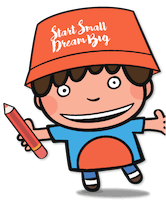“To Embrace is to celebrate everyone. But how do we celebrate everyone?” 6-years-old Aaron asks.
“Sometimes, we embrace by imagining that we are someone else so that we can understand them better,” Andrea continues, introducing the concept of ‘walking in another’s shoes’. 4 weeks into our 10-weeks project on embrace, the children have picked up vocabulary to describe their thoughts on embrace.
To investigate their ideas and questions a little deeper, we spent a day at <u>Ghim Moh Inclusive Playground and Ghim Moh Hawker Centre</u>.
During our field trip, we spent time on precious encounters and conversations with the residents in the midst of the morning breakfast buzz, and played at and analysed the inclusive playground.
After the trip, we gathered our documentations and reflected in various ways:
The children sketched out the people they people-watched. Prior to the field trip, they discovered how “_feelings can be connected to [an event or a person]_” (as quoted by 6-years-old Jerald), so they transcribed their feelings and thoughts during their observations.
The children also shared their thoughts on how the playground was embracing. 1st sketch: “I’ve never seen such a big walking ramp - even the merry-go-round too! […] I think it’s for people who needs the wheelchair. People who are big[-sized] too, maybe?” 2nd sketch: “The aeroglider is a BIG swing for everyone to sit on. It’s so big that even 10 people or people on wheelchair can fit on it!”
Trying out the aeroglider & testing out the mini doors for wheelchair users on the merry-go-round.
Subsequently, we decided to create sculptures of people we observed in attempt to bring our encounters to life.
“I observed a man and a dog. The dog was fluffy and it was his friend and it made my heart feel happy.
“The cleaning people in the Hawker Centre are [mostly senior citizens]. Some of them looked sad because maybe they are tired. I think I [should] help them because I’m very young and [have a lot of] energy!”
“I observed a Malay man. He was eating spicy noodles. He told me more about being Muslim (about the difference between food that is cooked halal and non-halal) and I wanted to eat that noodles.”
“I observed someone on the wheelchair. I felt excited because he is active even though he is old.”
<u>Origin of Embrace</u>
To end off, we googled the original meaning of ‘Embrace’. In Old English, to embrace meant to encircle, surround, enclose.
“Why do you think embrace means to encircle?”
“Like when you hug someone, you form [a round shape] with your arms,” Megan shares.
“Like when you go to the restaurant, we need to sit on a circle table so that we can see everyone,” Scott continued.
“In class, we sit in a circle so we can hear each other talk,” Daneel agrees.
“In a circle, everyone will feel like they belong here,” Asher concludes.































